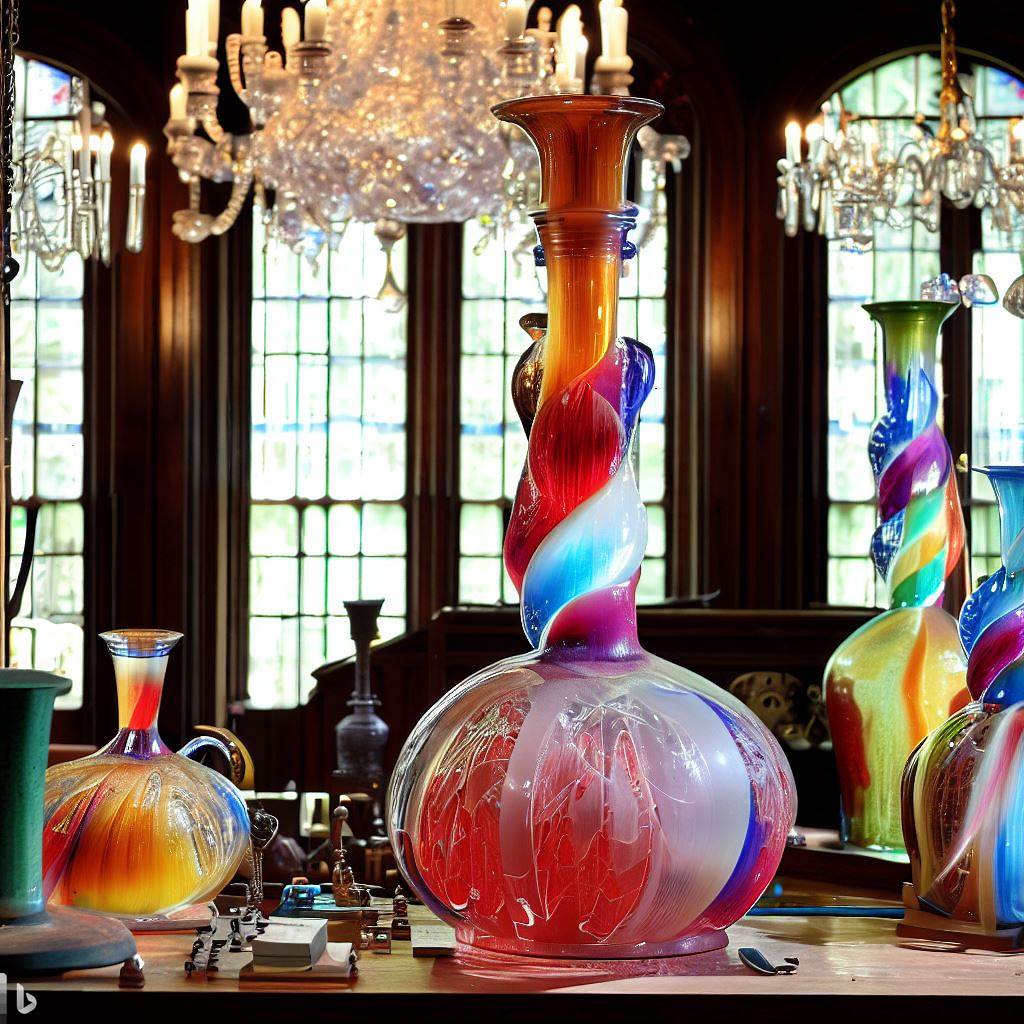Igniting Creativity with Color: Mastering Glass Pigments
Clear glass comes to life with the infusion of molten color. After first mastering transparent blowing fundamentals, skilled glassblowers expand their palette dramatically by controlling color application. Learning the science behind striking hues and integrating them into heated glass unlocks entire new realms of creative possibility.
The Science of Glass Colorants
While pure silica glass appears clear, introducing specific elemental compounds during the molten stage produces the vibrant colors we associate with fine glassware. Gold, silver, cobalt, manganese, cadmium, copper, and selenium each impart distinct shades from ruby reds to forest greens when added in the right concentrations.
These colorant compounds mix into the raw glass batch before melting or get incorporated later through frit, powder, and rods. The key lies in heating the colorants to fuse without losing their signatures. Matching furnace temperatures and timing perfectly captures each hue.
Gathering from a Rainbow
The starting point for any colored blown glass lies in gathering richly pigmented molten glass onto the blowpipe. Many furnaces contain separate color-specific crucibles allowing gathers of different pure hues. Once heated into the pipe, these dense liquid colors can be layered, blended, and embedded during blowing for kaleidoscopic designs.
Some artists utilize mosaic glass rods laminated with stripes of color rather than premixed molten glass. This allows alternating colorful bands when expanded. Whatever the color source, the initial gather sets the palette possibilities in motion.
Fanning Flames of Creativity
Color application defines the artistry possible with blown glass. Methods like fanning and flashing add feathery color accents across the surface. Detailed patterns emerge through layering and combining separate trails of colored glass. Gold foils and fused powdered metals produce dazzling surfaces.
Advanced masters demonstrate astonishing dexterity coordinating rainbow gathers from furnace to pipe to artwork. They envision entire creations chromatically before manifesting this passion for color through molten glass choreography. Their flair for polychromatic designs inspires.
Containing Infinite Patterns
The Italian millefiori technique expands color scope exponentially by containing limitless cane patterns within clear glass vessels. Thin stripes and slices of layered and fused colored canes get picked up on a gather to embed their miniaturized mosaic motifs into the interior walls. When illuminated, these contained murrine canvases reveal worlds of color.
Contemporary artists like Narcissus Quagliata incorporate painterly landscape scenes and modern graphics into cane works. Each unique slice recasts the unified design kaleidoscopically. Tiny handcrafted canes enable boundless pattern potential.
Patience Required to Master Color
While gathering and applying color fundamentals take only weeks to pick up, mastering more advanced techniques demands years. Subtle mixing ratios, temperature differentials, and expert layering reach artistic heights through extensive practice. Even masters continually refine and expand their color sensibilities over decades.
But glass color mastery remains an attainable aspiration through stepwise learning. Patience and acceptance of imperfection allow skills to accumulate. In glassblowing, color exemplifies the adage that the journey of a thousand miles begins with a single step.
Igniting Inner Vision Through Outer Color
Sound molten glass technique provides the necessary container for color’s fire to burn brightly. Technical color application skills empower glassblowers to manifest interor visions outwardly. But glass and flame alone do not produce art without the animating force of creative vision. Mastering the science of color allows it to be wielded in the service of artistic goals. Kindling one’s inner muse remains the ultimate objective behind learning any craft’s tools.
